Before you store extra gasoline in any plastic container, you need to know that not all containers are safe to use. It is important to use only approved containers that are specifically made for storing gasoline and other flammable liquids. Let's take a look at what plastic can hold gasoline.
High-density polyethylene (HDPE) is the most common type of plastic used to store gasoline. It is known for its ability to resist cracking and leaking, making it a great choice for holding gasoline in an airtight container. Ensure your container is marked “HDPE” and with the words “Gasoline Only" before using it for gas storage.
Understanding why you should only use gasoline-approved plastic containers is vital. In this article, we will take a closer look at why HDPE is safe to use to store gasoline. In addition, we will answer other frequently asked questions about storing gasoline, so read on!
Can You Use Any Plastic Container To Store Gasoline?
Gasoline is a corrosive and flammable liquid, and it requires special safety precautions when storing it. Regular plastic containers are not designed to handle the storage of gasoline and should be avoided at all costs.
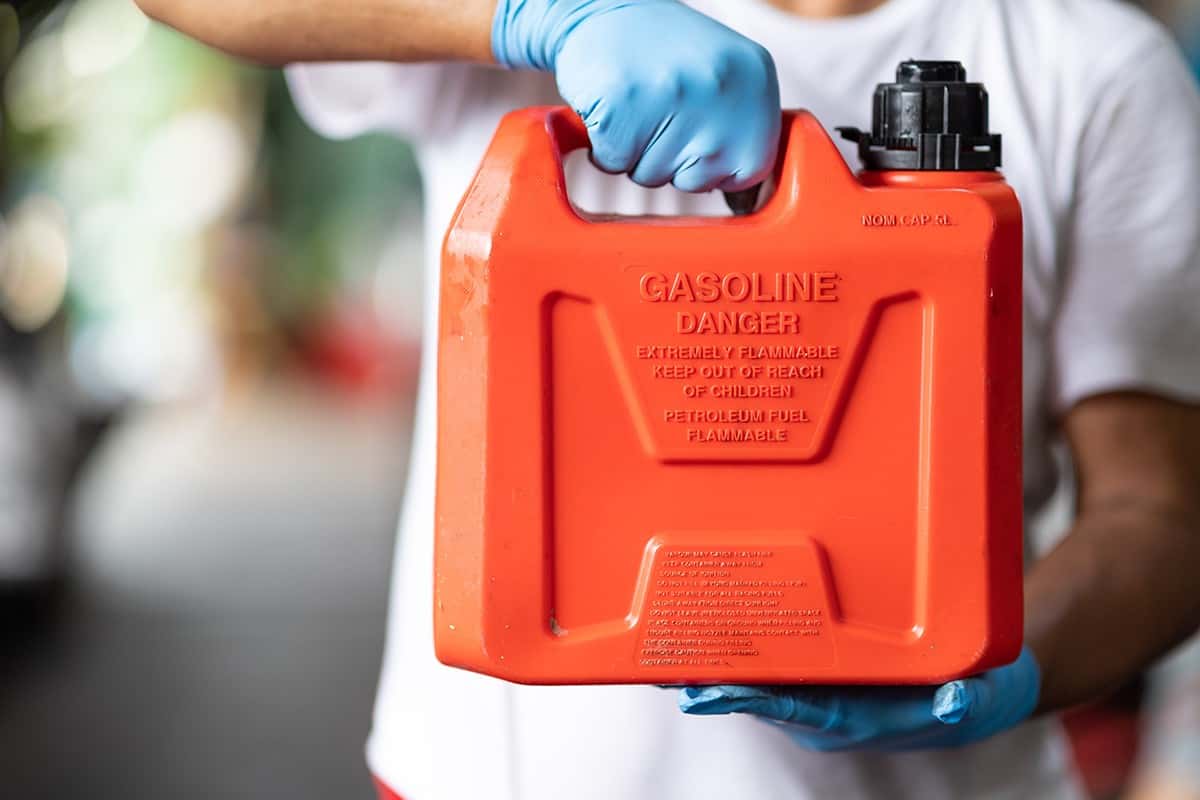
If you do put gasoline in any plastic container, the heat from the sun can cause the plastic to break down over time, which will make it susceptible to cracking and leaking. This could lead to a dangerous situation if gasoline comes in contact with sparks or an open flame.
In addition, pressure can build within the container, which could lead to an explosion if not stored correctly. That is why it is important to use only HDPE gasoline-approved containers for storing gasoline safely and securely.
High-density Polyethylene (HDPE) is specifically designed to store gasoline and other flammable liquids. This type of plastic is very durable, resistant to cracking, and protects gasoline from the elements. In addition, it is lightweight and easy to transport if needed.
When looking for an HDPE gasoline-approved container, make sure that it has a secure lid that seals tightly to prevent leaks or spills. It should also be labeled “HDPE” and with the words “Gasoline Only” to ensure it is safe for gasoline storage.
Finally, always remember to store your gasoline container in an enclosed area away from any sources of heat or open flames. This will help prevent any dangerous accidents from occurring due to the flammable nature of gasoline.
Even direct sunlight can mean bad news when it comes to storing gasoline. That is why it is important to store your HDPE containers in a cool, dark place away from direct sunlight whenever possible.
Where Should You Store Gasoline?
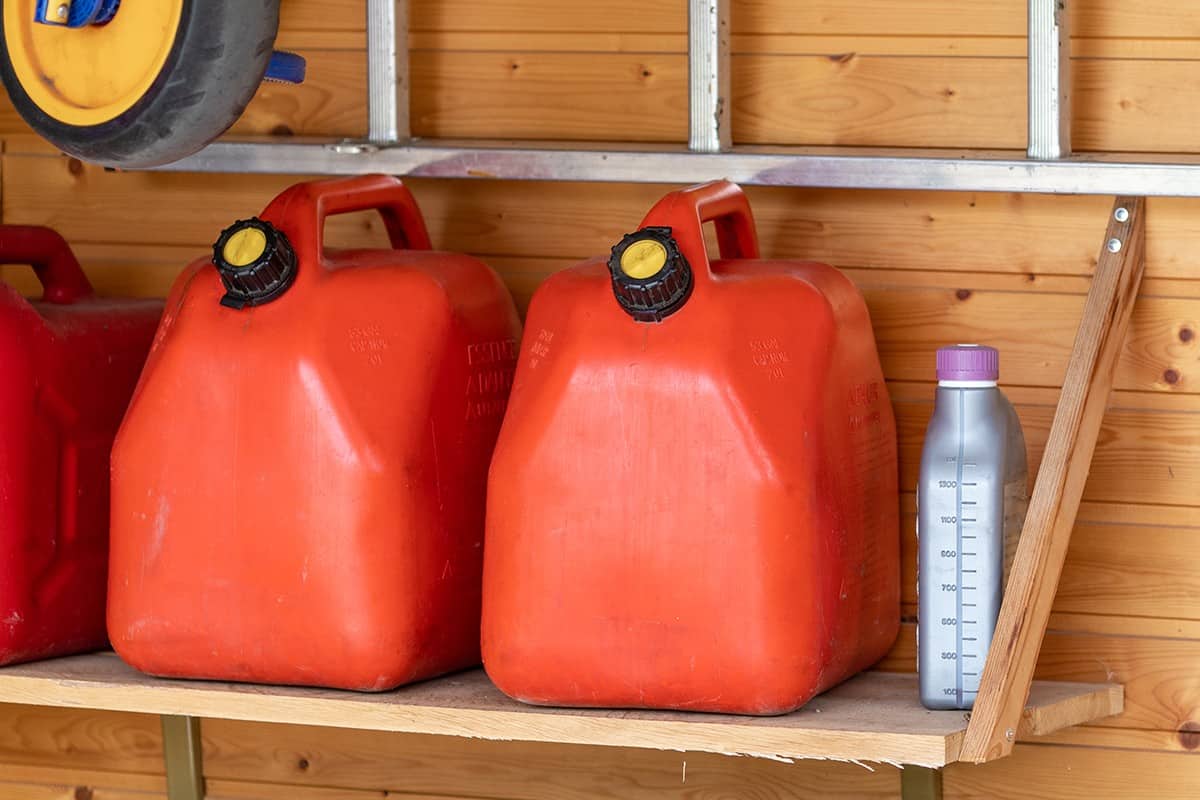
While we touched on the importance of using an HDPE gasoline-approved container, it is also imperative to store your gasoline in the right location. In addition to a cool, dark place away from any sources of heat or open flames, it is important to store your fuel containers in an area with adequate ventilation.
This will help reduce the risk of a potential fire due to gasoline vapors accumulating and igniting in confined spaces. It is also wise to keep your gas storage area separate from other combustible materials, such as paint or solvents.
You should also keep gasoline stored away from your home. If you must store it indoors, make sure to keep it in a detached building or shed 50 feet away from any sources of ignition.
If you don't have a detached building to store gasoline in, you can get a steel safety cabinet. These cabinets are designed to hold up to gasoline containers and feature ventilation slots on the sides for optimal safety. The steel cabinets can be set up outside of your home or garage, and they are an effective way to store gasoline safely.
Before storing the gasoline containers, ensure they aren't filled to the brim. This will help reduce the risk of gasoline spillage. Plus, the vapors expand when exposed to heat, so having some extra space in the container will help relieve the pressure buildup.
Last but not least, be sure to always have a fire extinguisher nearby just in case a hazardous situation arises.
How Long Can You Store Gas Before It Goes Bad?
Gasoline begins to break down over time, so it should not be stored for extended periods of time. The average shelf life of gasoline is usually around 3-6 months after being purchased. After that point, the gasoline will start to degrade due to evaporation and oxidation, which can cause your engine to run poorly.
Keep in mind that even after 30 days, the quality of gasoline begins to decline. That is why it is important to use gasoline as soon as possible and not store it for extended periods of time.
To help avoid wasting money on gasoline, only buy it as you need. For example, buy one month's worth of gasoline and use it before buying additional fuel. This will ensure that the fuel you are using is always fresh and up to date.
You can always buy a fuel stabilizer to help extend the lifespan of gasoline. Fuel stabilizers prevent oxidation, which helps gasoline last longer than it would without one. Be sure to follow the instructions for adding a fuel stabilizer to your gasoline container before storing it away.
How Can You Tell If Old Gas Is Bad?
If you're ever unsure about the quality of your gasoline, there are a few ways to tell if it has gone bad. Like food, gasoline can change colors or emit a strange odor if it has gone bad.
The gas may have a dark or muddy color, or it may even have a sour smell if it has gone bad. If you notice any of these signs, it is best to discard the gasoline immediately.
Old gas will also leave sediments at the bottom of your fuel container. If you see bits and pieces of residue in your gasoline, it should be discarded as well. Lastly, if you put gas into your vehicle, lawnmower, etc., and the engine sputters, it's a sign the gas is bad.
In any of these cases, call your waste management and recycling center to properly dispose of the gasoline. It is not safe to just pour it out on the ground or in a sink, as that could be hazardous for your health and safety.
It is also important to inspect all gas containers before refilling them with new gasoline. This will help ensure you are not putting old fuel into your engine, which can cause engine damage.
Is It Okay To Mix Old Gas With New Gas?
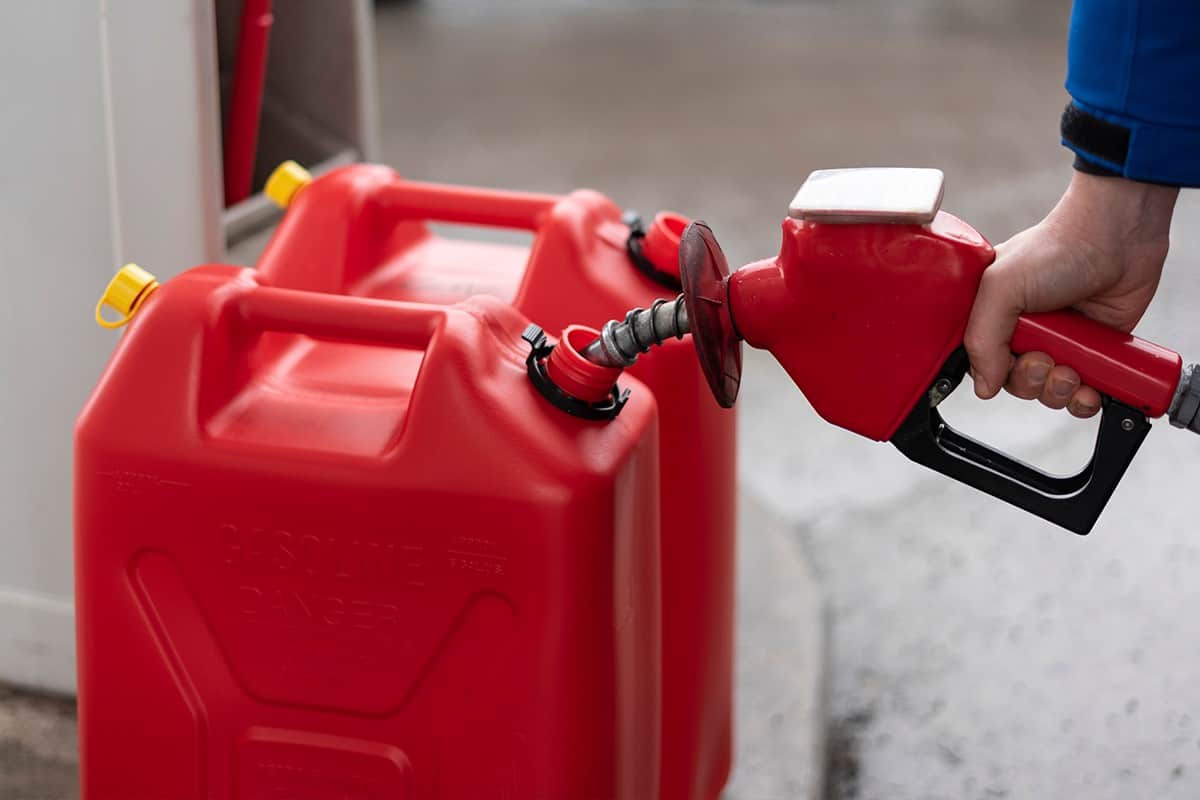
Like adding new oil to old oil, adding new gasoline to old fuel should be avoided. Old and new fuels have different properties, so mixing them can create a reaction that could damage your engine or cause other safety hazards.
This is because the old gas has already lost its volatility, and it may contain sludge or other sediments that can harm your engine. This is why you should always dispose of old gasoline properly instead of mixing it with fresh fuel.
If you are ever unsure about the age of your gasoline, discard it and purchase new fuel for your vehicle. That way, you can ensure that your engine is running on the highest quality gasoline and avoid any potential problems.
Is It Better To Store Gasoline In Plastic Or Metal?
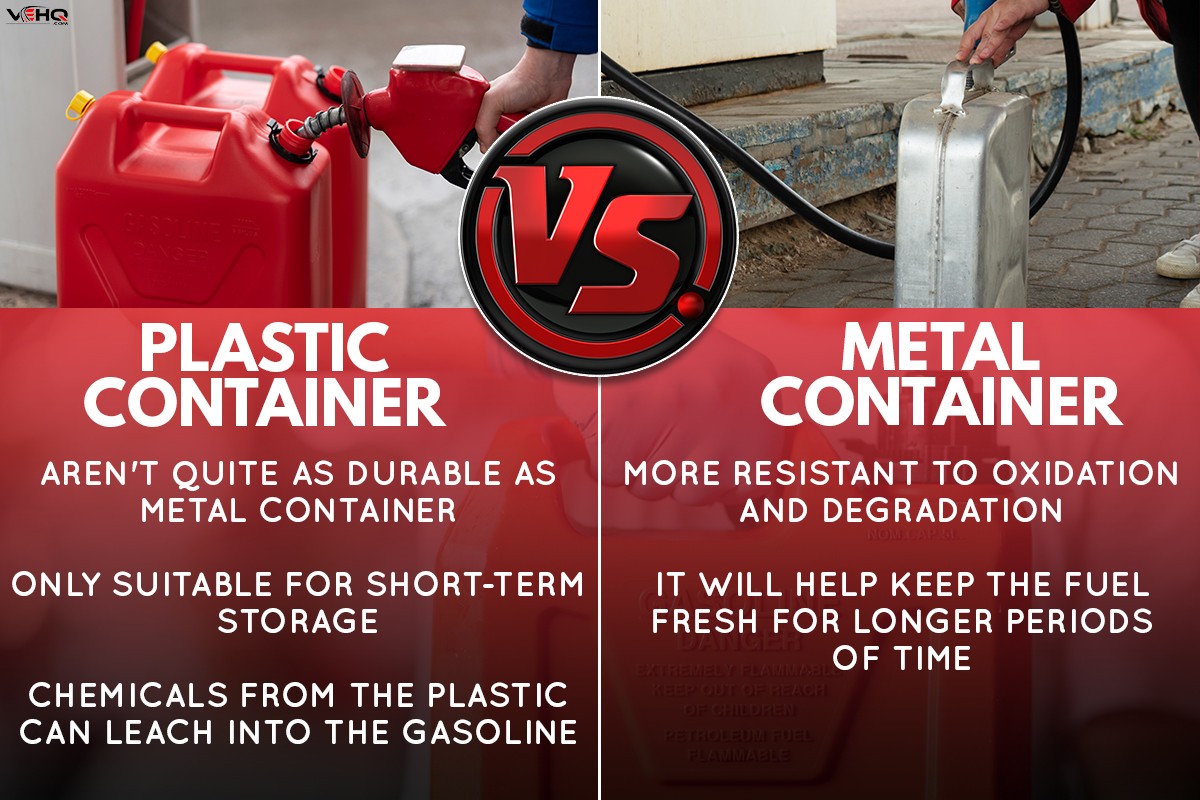
For long-term gas storage, containers made from metal are better than plastic. Metal is more resistant to oxidation and degradation, so it will help keep the fuel fresh for longer periods of time.
Plastic containers can also be used, but they aren't quite as durable as metal. They are usually only suitable for short-term storage since gasoline can deteriorate faster in plastic containers.
Plus, the chemicals from the plastic can leach into the gasoline, which can cause engine problems. If you do choose metal as your gas container, ensure it's not rusted or corroded. If it is, discard it and purchase a new one to ensure the fuel you are storing is safe.
How Do You Clean A Portable Gas Tank?
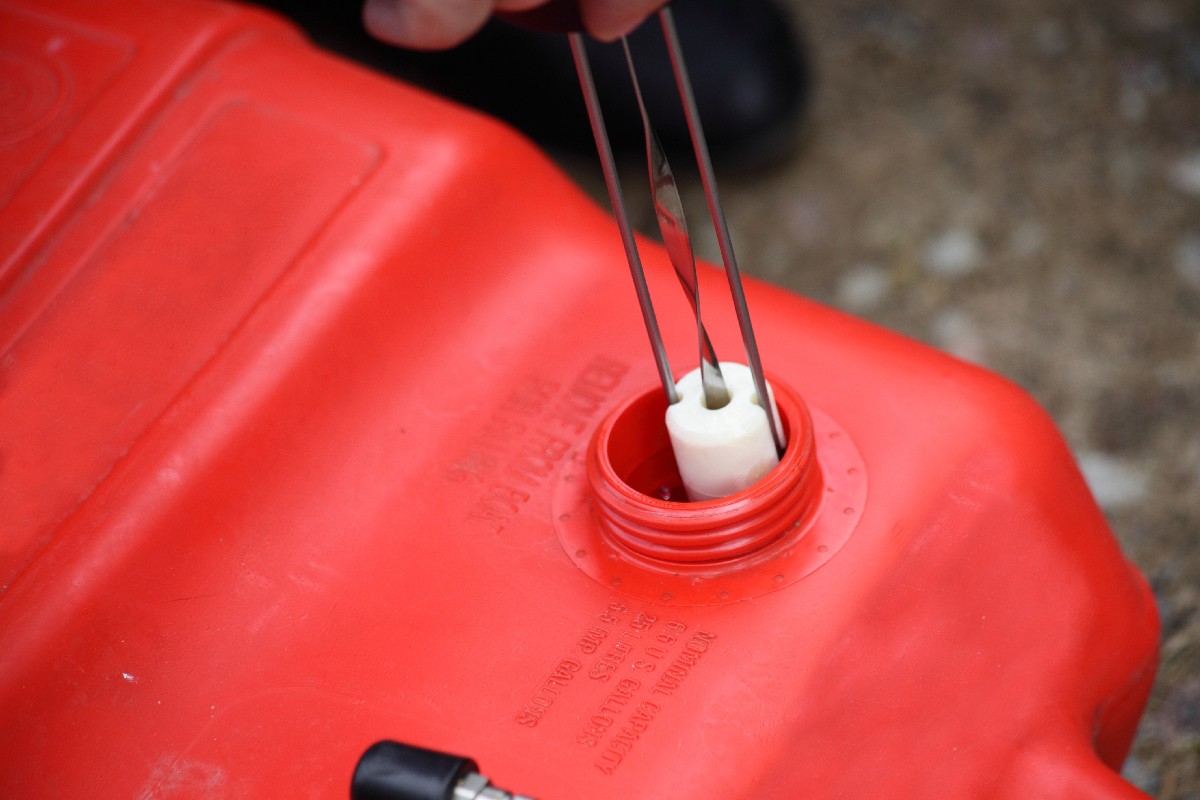
In the case that your gasoline has expired, you will want to clean the container out before adding new gas. This is important to ensure that the new fuel will not be contaminated with old sediments or particles.
- First, you'll want to empty out any remaining gasoline and discard it properly.
- Next, use a degreaser or detergent to clean the inside of your container. If you can't scrub the container, then shake it around with a cleaning solution to help loosen any hardened deposits.
- Then, rinse it out with water until all of the soap is gone.
- Take off the nozzle and let it air dry.
- Once air dry, give the tank another rinse with clean water.
- Finally, let it air dry again before refilling it with gasoline.
Keeping your gasoline containers clean is vital for the safety of yourself and your engine. If you follow the steps mentioned above, you can ensure your fuel is safe and will keep your engine running smoothly.
Final Thoughts
Following these guidelines and using the right container will help you store gasoline safely and securely. Proper storage allows you to keep your home safe from fires or explosions caused by flammable liquids such as gasoline.
Made it to the end? Here are other articles you might enjoy:
Does Gasoline Damage Car Paint?
